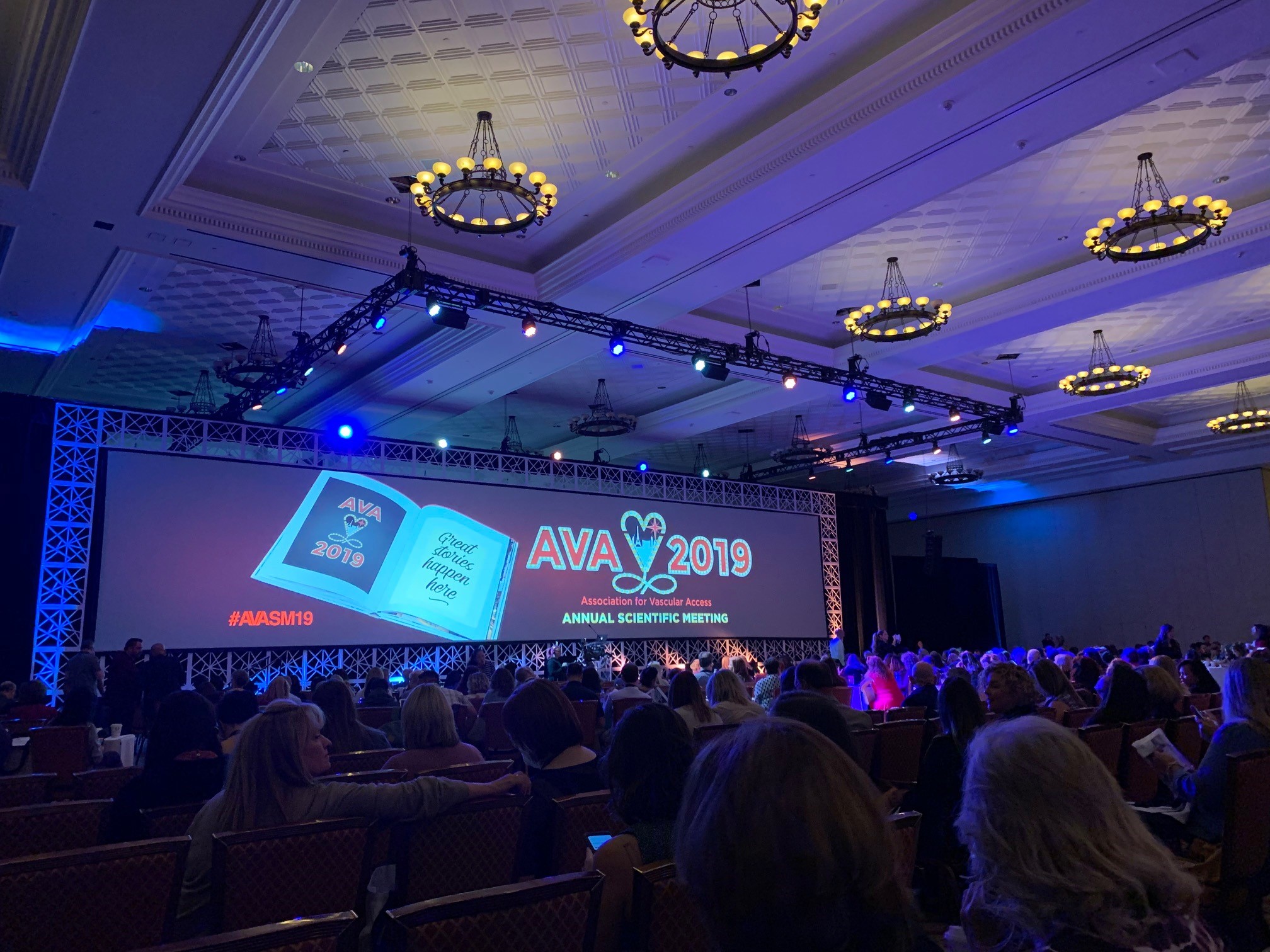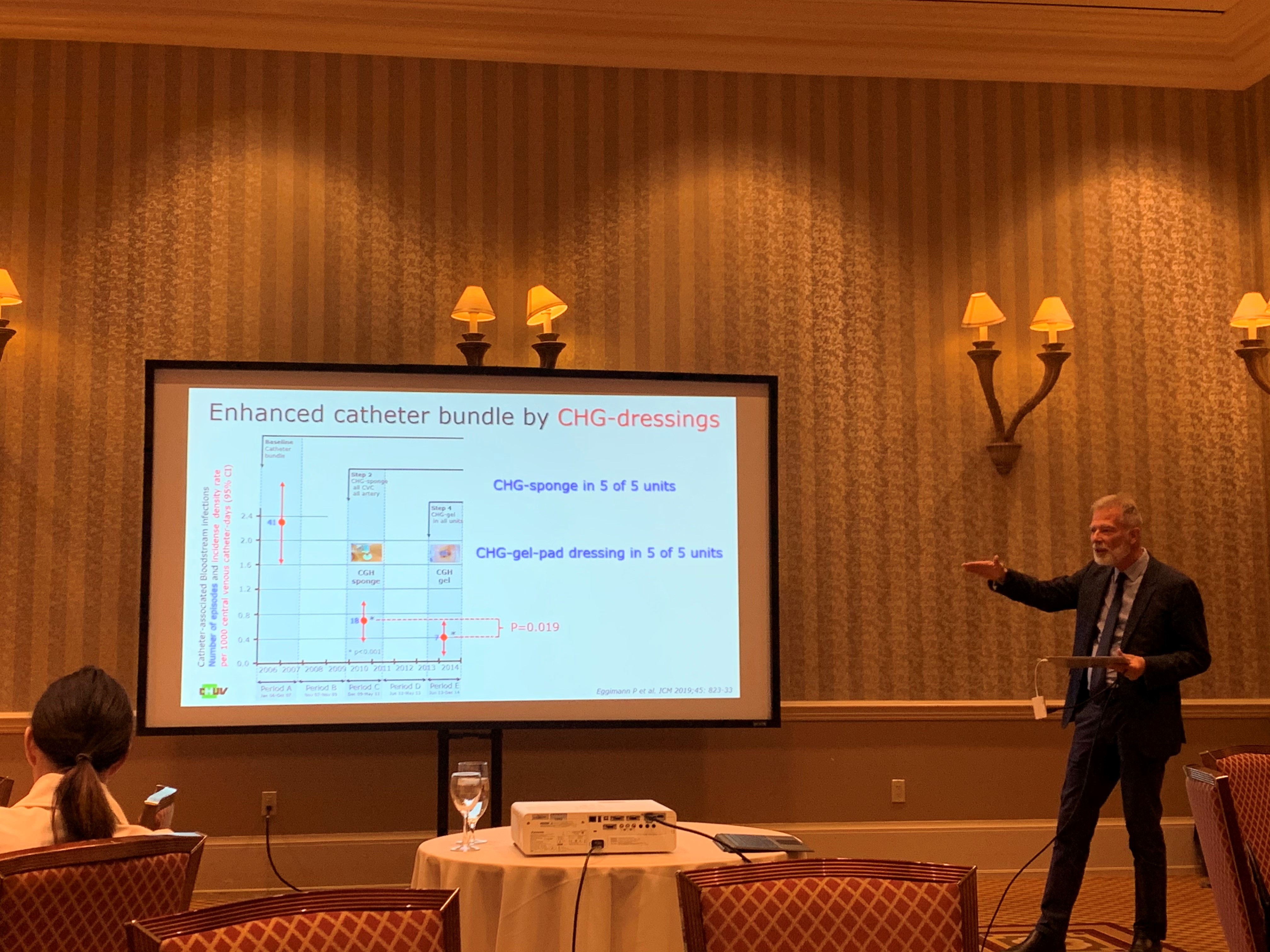
In early October, more than 1,400 clinical vascular access professionals gathered in Las Vegas to connect and learn about the latest advancements in vascular access care during the Association of Vascular Access (AVA) Scientific Meeting. Here are the top trends our team observed during the meeting.
1. PIV – Making Peripheral IVs a Central Focus
What do Facebook, Equifax and Yahoo have to do with IV Lines? During the opening remarks, AVA’s CEO told a story about how sophisticated technology companies succumbed to data theft by hackers who did not gain access through ‘Central’ mainframe security systems with advanced levels of encryption and protection, but through unprotected and unmonitored ‘peripheral’ access points. It was a compelling analog to the care and maintenance of IV lines. The story was a pointed reminder that a patient with a BSI doesn’t care if the source is from a central line or peripheral line or any other access point – the consequences to the patient are the same. All lines and access points present risk and need protection.
2. Patient Experience Matters – From Clinical Practice to Patient Education
From improving clinical practice to patient education, AVA provided an enhanced focus on technology, processes, and patient engagement to ensure positive patient outcomes. Technologies focused on first-time success and needle-free blood drawing technologies addressed the pain and fear experienced by patients while preserving their vascular system. Process improvements such as the PIV5R (PIV Five Rights) addressed the ability to advance one PIV per patient through clinician proficiency, clinical practice, technology selection, and proper maintenance. Finally, elevating patient education and awareness regarding vascular access provides the clinicians the opportunity to build stronger patient relationships, provide insight into potential complications, and provide the patient the opportunity to have ownership in the care of their line.
3. Managing Change – Elevating Education to Unlock Potential
AVA is making tremendous strides in using education to enhance vascular therapies around the globe. The release of the Vessel Health and Preservation: The Right Approach for Vascular Access, combined with digital capabilities, provides a dynamic learning experience for clinicians to improve their practice and highlights a collaborative effort (the textbook was funded by Nancy Trick (RN, CRNI®, VA-BC™), 3M, and Teleflex) to improve patient outcomes. Further collaborative efforts to educate clinicians can be seen by Dawn Berndt (DNP, RN, CRNI the Clinical Education & Publications Manager for INS) and Marlene Steinheiser’s (PhD, RN, CRNI the Director of Clinical Education for INS) announcing early discussions on the rollout plan for the update to the Infusion Therapy Standards of Practice and Policy and Procedure for Infusion Therapy.
4. Lean Six Sigma Applied to IV Insertion, Care & Maintenance
With the emergence of Lean IV Therapy™ and PIV5Rights™ Bundle, increasingly Lean and Six Sigma principles are being applied to IV Care. As evidence continues to highlight how process standardization and practice variability reduction improve clinical outcomes and reduce complications, it’s no wonder that DMAIC and PDSA frameworks are emerging in healthcare. And it’s not just improving patient outcomes that matter. Statistics on PIV failure rates and complication rates suggest there is considerable opportunity to reduce waste and improve the economics of PIV care.
5. Technology Advancements Take Center Stage
What’s a scientific meeting without industry showcasing the latest and greatest advancements in technology? The AVA exhibit hall featured several old and new technologies that all shared the common goal of improving clinical and patient outcomes and reducing the cost of care. The use of tissue adhesives in vascular access continues to be a trending educational topic and a significant source of discussion amongst attendees. Several educational sessions were aimed at demonstrating how Tissues Adhesives improved various aspects of IV care. There were also several technologies on display that aimed to improve first attempt success for PIV access.

